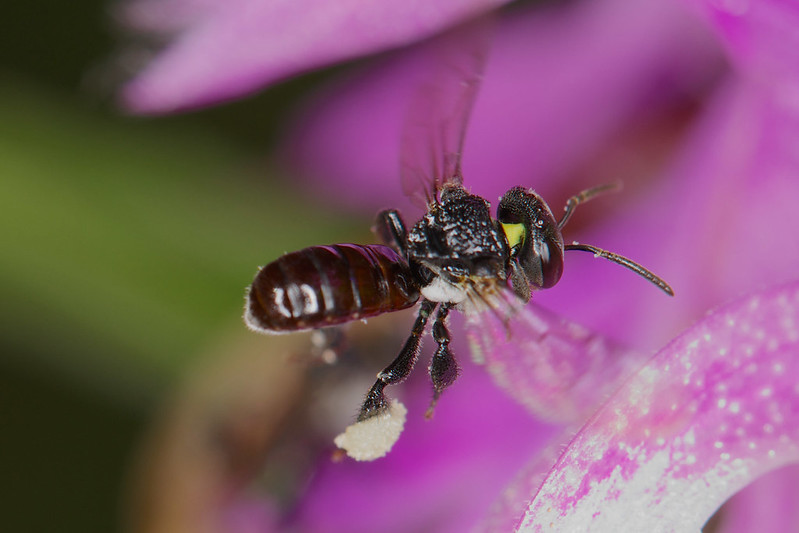Domesticating Australian native bees for use as alternative pollinators
To address the urgent threat to pollination posed by the establishment of Varroa mites in Australia, which will decimate honey bee populations, we aim to domesticate native Australian bees to use as alternative pollinators.
Project status
Content navigation
About

Australian agriculture is facing an existential threat in the form of Varroa mites, honeybee ectoparasites that will likely cause widespread colony collapses and disruptions to pollination. To address the urgent challenge posed by the establishment of Varroa mites in Australia, we aim to domesticate native Australian bees to use as an alternative pollinator. This project leveraging Australia's unique biodiversity to come up with an alternative solution. The anticipated outcomes could revolutionize Australia's agriculture, by offering a more resilient pollinations and opening new economic avenues for beekeepers.
Native stingless bees are already being used for pollinating some crops. However, they are largely tropical or subtropical and struggle in temperate regions where some of Australia's most important crops, such as almonds, grow. We will attempt to extend their range southward.
This project merges high-level ecological and evolutionary questions with important challenges facing national food security. On one hand, we will explore fundamental and as yet poorly understood ecological questions – what limits an animal’s range? On the other hand, this project aims to secure Australian pollination and food security.
For Australian and New Zealand students (citizens or permanent residents) this project is funded by the CSIRO iPhD program, which involves a collaboration with a CSIRO lab, industry placement, and a four-year stipend of $46,000 per year.
